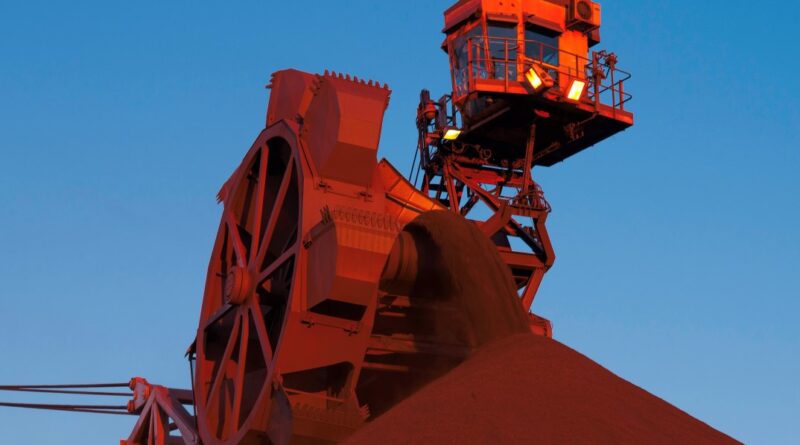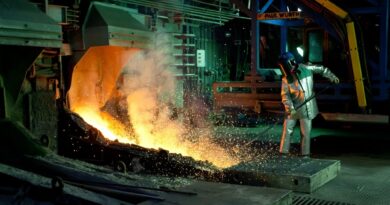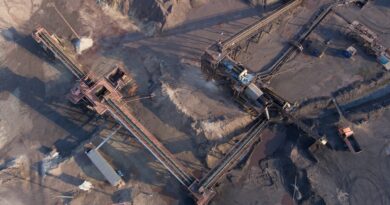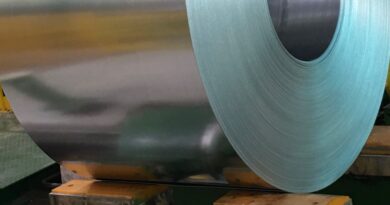Kumba Iron Ore to invest in processing technology at Sishen mine
Kumba has now completed a full technical review of its ultra-high-dense-media-separation (UHDMS) processing technology project at its Sishen mine in the Northern Cape of South Africa. Following this review Kumba is pleased to announce board approval for a further R7.6 billion investment in the UHDMS project, in addition to the R3.6 billion previously approved in
February 2021, bringing the total capital investment to R11.2 billion. To date, R1.8 billion has been spent on the detailed engineering design, earthworks and the technical review. The remaining R9.4 billion will be invested between the second half of 2024 and the end of 2028, in line with the phasing of the project, with full capacity expected to be achieved by the end of 2028.
The margin-enhancing UHDMS processing technology at Sishen mine reduces the mine cut-off grade and the mine strip ratio as C-grade waste material will be processed as ore. It trebles proportion of premium quality production volume at Sishen mine to 55%, up from the current 18%.
It maximises the product premium by an additional US$2-3/t, above lump and Fe premiums. It delivers an estimated internal rate of return (IRR)¹ of over30% and earnings before interest, tax, depreciation and amortisation (EBITDA) margin of more than 50%.It has the potential to extend the life of Sishen mine to 2044.
Mpumi Zikalala, CEO of Kumba, said: “This investment demonstrates our focus on value over volume. Through utilising UHDMS processing technology, we can treble the proportion of premium iron ore product from our world-class Sishen mine. Premium iron ore is increasingly highly valued by our customers because it reduces carbon emissions from the steelmaking process and so plays a key role in green steel production. This supports higher margins and a compelling return on investment as well as creating a new pathway to extend Sishen’s life to 2044.
“The UHDMS processing technology will provide Kumba with an enhanced ability to respond to future customer requirements and improve flexibility across the value chain. The implementation will be phased over four years to ensure safety and operating stability across the site during construction whilst maintaining disciplined capital allocation.”
The UHDMS project will convert the current dense-media-separation (DMS) processing plant at Sishen to UHDMS technology.
This technology uses specialised ferrosilicon in the plant processing of raw iron ore and allows greater flexibility to process a
wider range of Fe grades and densities. The implementation of the technology will improve the proportion of premium iron ore
and lower the waste stripping ratio, while maintaining the lump:fine ratio.
Sishen produces iron ore at an average Fe content quality of ~64% and an average lump:fine ratio of 70:30. UHDMS technology is expected to increase the volume of premium iron ore to ~55% of Sishen’s production, up from the current ~18%. This is expected to increase the product premium by US$2-3/t on average above lump and Fe premiums. Furthermore, by reducing the mining cut-off grade to 40% Fe from the current 48% Fe, the waste stripping ratio improves to ~3.3 from ~3.9, resulting in 15Mtpa less waste mining required and a significant reduction in the cost of mining. This project also creates the potential to extend Sishen’s life of mine up to 2044.
Overall, the R11.2 billion total investment in the UHDMS technology is expected to result in an EBITDA margin of more than 50% and an IRR of over 30%. The additional capital of R7.6 billion largely relates to an increase in engineering design maturity and the execution period as a result of phasing the upgrade and conversion of the modules to improve safety and operational stability. The implementation will follow a modular approach with six UHDMS coarse modules out of eight and five fines modules out of seven being converted. The project will commence in November 2024, with the main tie-in of the project in 2026, and the plant reaching full capacity by the end of 2028. During the implementation phase, the modules not under construction, as well as the JIG plant will continue to run, and production will be supplemented by finished product stock.




